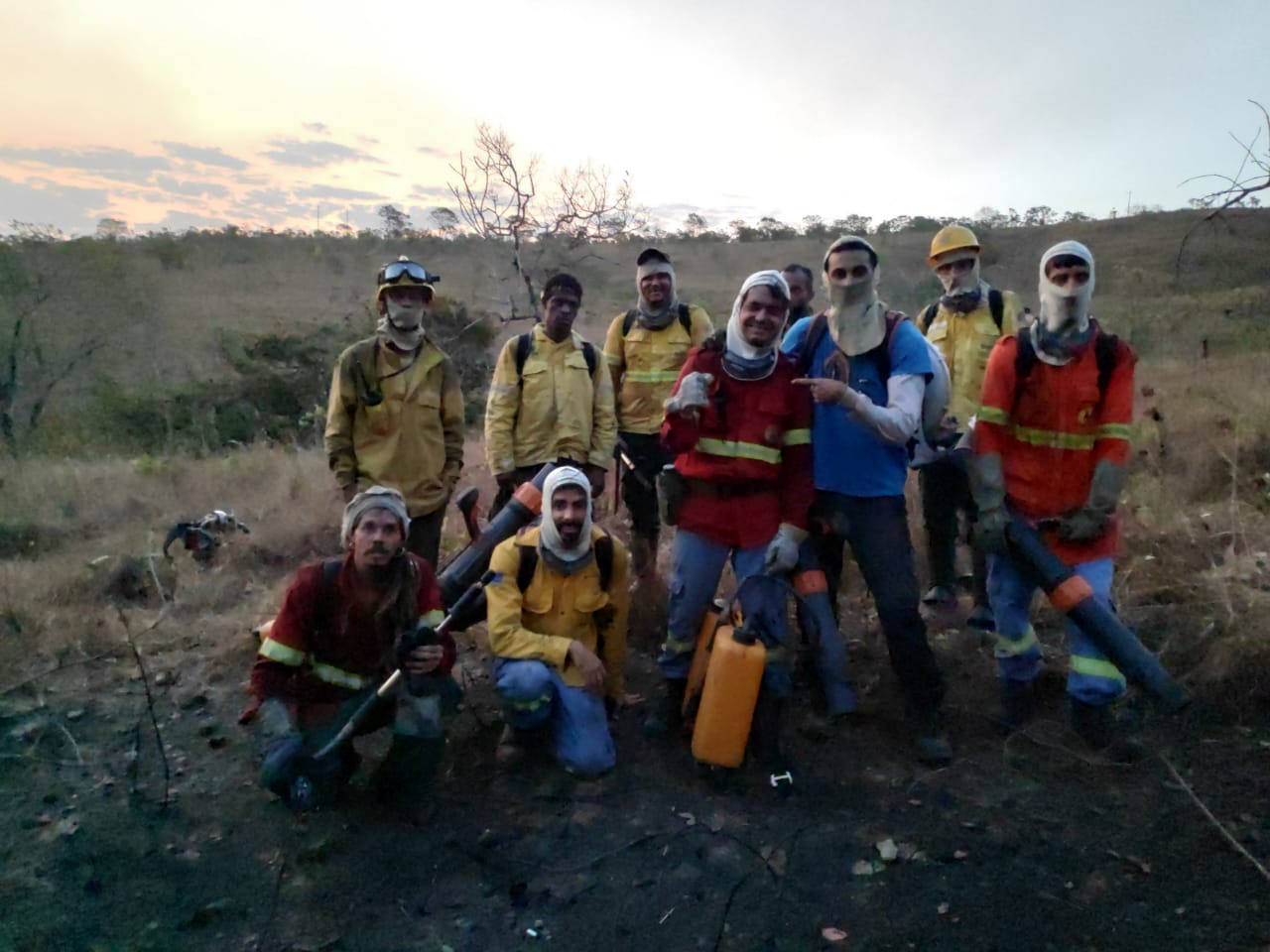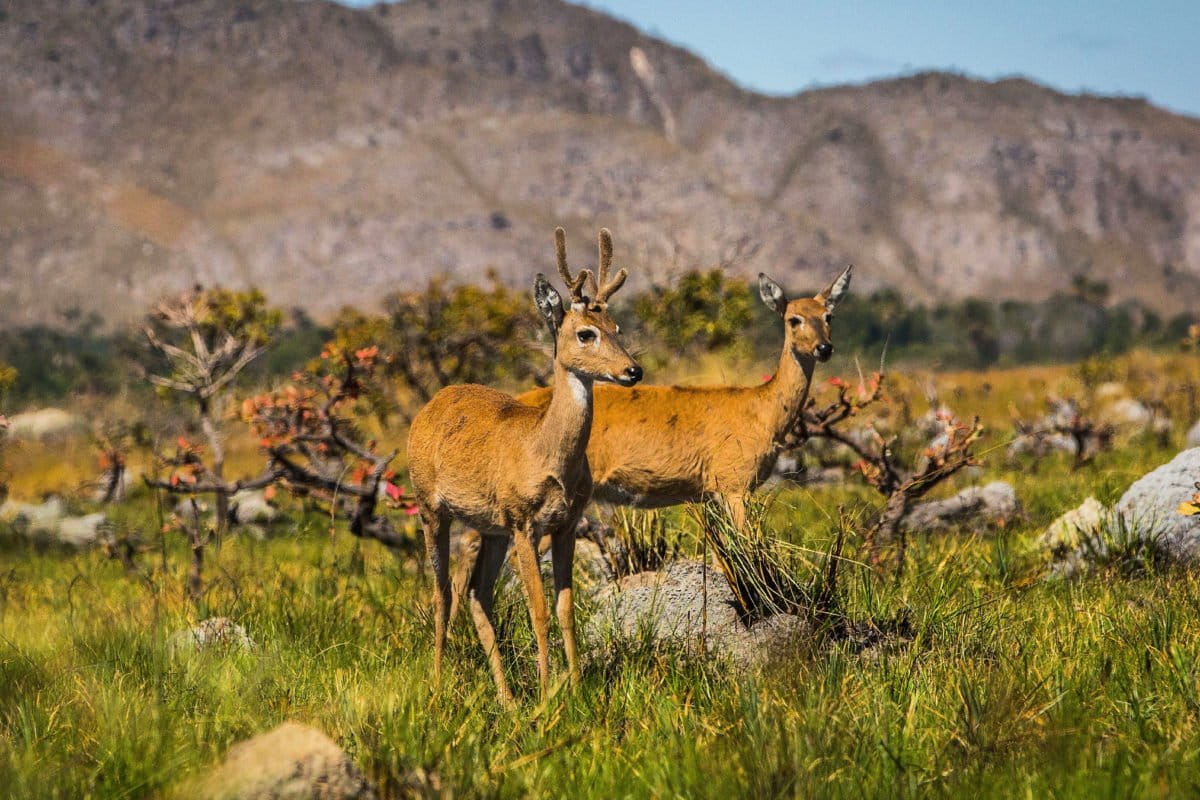- Thousands of fires caused by humans in Brazil’s Cerrado savanna region continue to spread, with several fires around and inside Chapada dos Veadeiros National Park, a UNESCO World Heritage Site.
- The park is home to dozens of rare and threatened species as well as the source of many important rivers and waterways; experts warn the intensity of the fires could permanently damage the natural vegetation.
- The fires don’t come as a surprise to many scientists who had predicted earlier this year that ongoing drought, rising rates of deforestation, and lack of enforcement would build up to a severe fire season.
- Every single month this year has seen above-average levels of fire in the Cerrado, with more than 36% of all fires in Brazil this year concentrated in this biome, even though it only covers just over 20% of Brazil’s land mass.
Fires have destroyed at least 18,000 hectares of vegetation (44,480 acres) in central Brazil’s savanna region and now threaten a national park that’s home to rare species such as jaguars, maned wolves and Brazilian mergansers.
The ongoing fires in the Chapada dos Veadeiros region, in the northeast of the state of Goiás, started on Sept. 12 near Alto Paraíso de Goiás, one of the best-known tourist attractions in the region, forcing around 100 tourists to be evacuated. The Civil Police are investigating whether the origin of the fires is criminal.
Two fires in particular pose a risk to Chapada dos Veadeiros National Park, a World Heritage Site that’s an important refuge for several species threatened by extinction, including pampas deer, crested seriemas, giant armadillos, and giant anteaters.
The park is unique because it’s at a higher altitude than the rest of the Cerrado savanna, said Isabel Schmidt, an ecologist at the University of Brasília (UnB) who has worked in the Cerrado for more than a decade. “Lots of plants and animals [are] unique to that region. It’s an important area for water and in terms of biodiversity.”
An estimated 70 species of mammals, 306 birds, 53 amphibians and reptiles and 49 fishes can be found in the park, as well as more than 1,000 species of moths, 160 bees and up to 400 species of vascular plants per hectare.
“Fires have reached areas inside the park, but the largest extensions of vegetation affected this year are outside the conservation unit,” said Fernando Tatagiba, former head of Chapada dos Veadeiros National Park and an environmental analyst with ICMBio, the federal government agency that administers parks and other conservation units. “But considering that the fauna moves between areas, even fires in nearby private properties have negative impacts on the park’s biodiversity.”

This year’s fires are smaller than the blazes in and around the park in 2010 and in 2017, when a quarter of the park was destroyed by wildfire. But they are still alarming as they are much worse than last year and devastating to the vegetation and wildlife, Tatagiba said.
“It’s really difficult to fight the fires because temperatures are so high, winds are really strong, and everything is so dry,” Ivan Anjo Diniz, operational coordinator of the NGO Rede Contra Fogo, a fully volunteer-driven network of firefighters operating in the region since 2017, told Mongabay by phone. More than 150 volunteer, local and state firefighters are working round the clock to extinguish the fires, he said.
Claudomiro de Almeida Cortes, who has worked as a volunteer firefighter since 2007 and also works on restoration projects inside the national park, said he’s worried about the impact of the fires on the natural vegetation, which is crucial for maintaining water in the Cerrado. “It’s killing the gallery forests that protect the springs, and with that the springs are drying up,” he said by phone.
“These current fires are extreme” Schmidt said. “At this time of year they are all human-made fires. They are totally out of place, out of the natural fire regime.”
This year’s fires are happening during the late dry season in the Cerrado, which runs through October and is characterized by extremely low humidity and lots of woody biomass that has been drying for months. That’s the worst time for many of the plants and animals, according to Schmidt. “Most of the woody plants reproduce in the late dry season, so right now they are flowering and fruiting. They don’t have a lot of energy to survive [if they are burned],” she said.
On top of this, when fires burn large areas, animals are at much higher risk of dying, she adds. “If an animal survives the fire, it doesn’t have an area to live in, there is nowhere else to go,” Schmidt said. “Herbivores don’t have plants to eat, animals don’t have shelter or food. So the mortality is highest after the fire.”
https://twitter.com/MidiaNINJA/status/1440482313511473165?s=20
Deadly trio: climate change, deforestation, and lack of enforcement
This year’s fires aren’t necessarily a surprise to those working in and studying the savanna region. Parts of the Amazon and Cerrado are reportedly facing their worst drought in almost a century as well as high levels of deforestation. Scientists have been warning for months about the potential for this fire season to be exceptionally bad, as Mongabay reported in July.
And the Cerrado has been hit especially hard. So far, every single month this year has seen above-average levels of fire in the Cerrado, and more than 36% of all fires in Brazil this year have been in this biome, even though it only covers just over 20% of the country’s land mass, according to data from Brazil’s National Institute for Space Research (INPE).
Climate change is a big contributor to the increased intensity, frequency and duration of the fire season, Schmidt said. But deforestation and fire suppression policies are also driving factors, she added.
The Cerrado this year has seen the worst deforestation levels since 2012, and budget cuts to Brazil’s environment ministry mean that enforcement is at an all-time low.
Environmental programs all over Brazil have reportedly lost funding, such as the integrated fire management program that Schmidt and Tatagiba are involved with. Lack of funds at INPE, the space agency, may also mean that satellite monitoring of the Cerrado will likely be cut starting next year, making tracking everything from fires and deforestation to the spread of cropland and pasture much more difficult.
Around half of the Cerrado’s unique vegetation has been cleared to grow soy, cotton and corn and to graze cattle. Much of the remaining biodiversity is contained in a scattering of national parks and ecological reserves, such as Chapada dos Veadeiros National Park.

There is a global consensus among savanna ecologists that fire is essential for maintaining the diversity of species in tropical savannas. Historically, fire has been an important part of savanna ecosystems, and many of the plants and animals in the Cerrado are adapted to fire, or in some cases require it to flourish. But for years the Brazilian government maintained a zero-fire conservation policy and attempted to extinguish all fires, even those considered useful.
In 2014, authorities started incorporating prescribed burning into their land management practices in Cerrado parks and ecological reserves. It’s been shown to be successful at reducing the intensity and size of fires and maintaining biodiversity. But prescribed and natural fires are low-intensity fires and are always done in the rainy season or at the very beginning of the dry season.
Banner image: Pampas deer, the most endangered South American deer species, can be found in Chapada dos Veadeiros National Park. Image courtesy of Fernando Tatagiba/ICMBio.
FEEDBACK: Use this form to send a message to the author of this post. If you want to post a public comment, you can do that at the bottom of the page.
